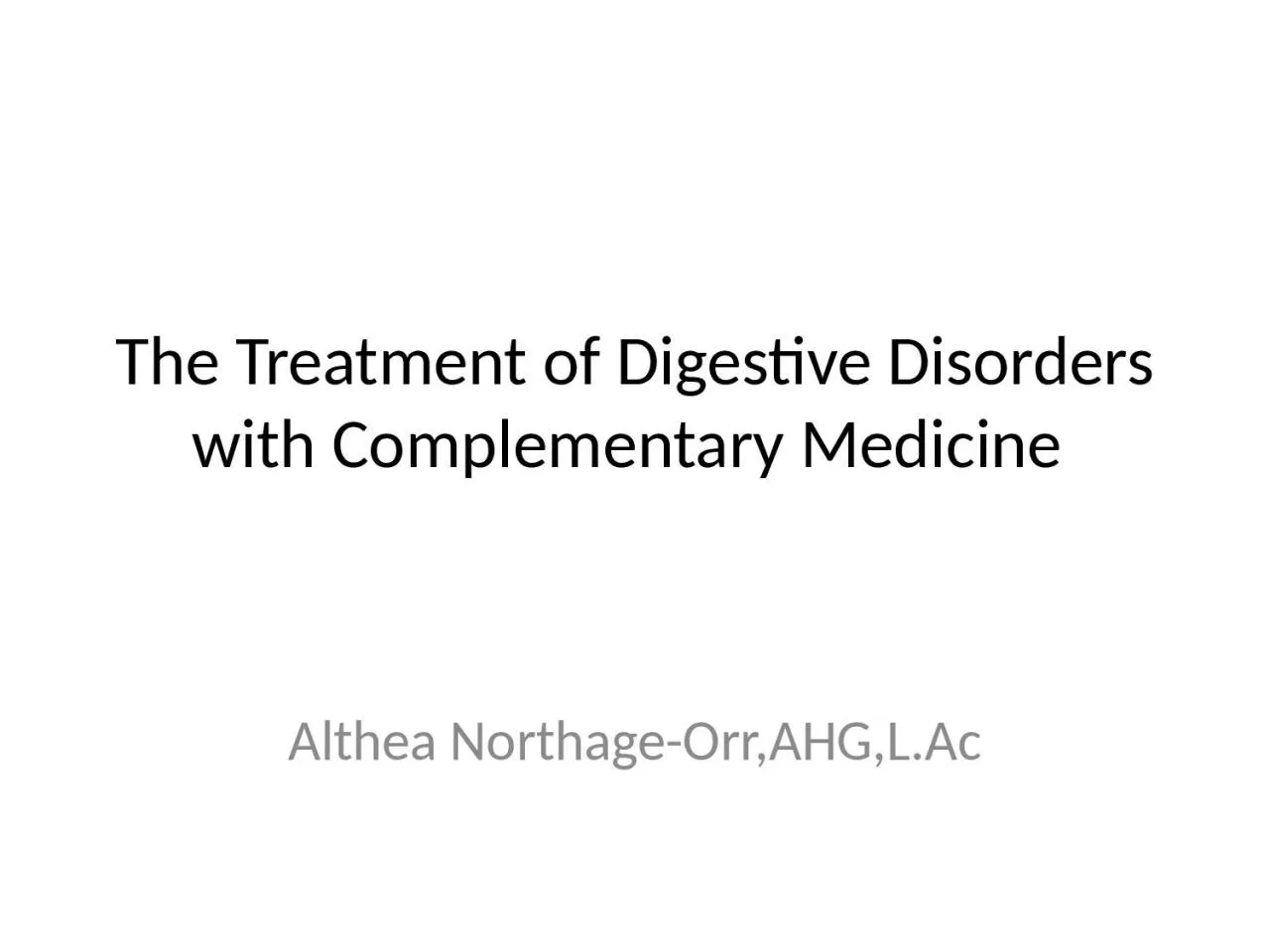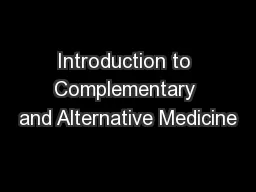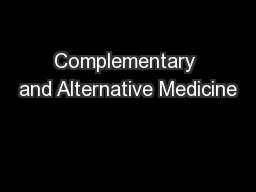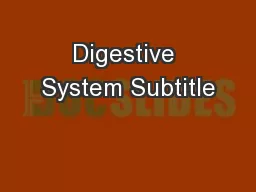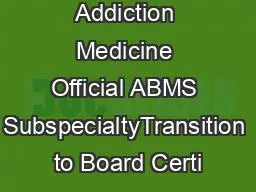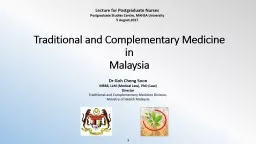PPT-The Treatment of Digestive Disorders with Complementary Medicine
Author : ash | Published Date : 2023-07-09
Althea NorthageOrrAHGLAc The Four Essential Aspects of Gastro Intestinal Health 1 Digestion 2 Elimination 3 Microflora Balance 4 Gut Integrity How the GI works
Presentation Embed Code
Download Presentation
Download Presentation The PPT/PDF document "The Treatment of Digestive Disorders wit..." is the property of its rightful owner. Permission is granted to download and print the materials on this website for personal, non-commercial use only, and to display it on your personal computer provided you do not modify the materials and that you retain all copyright notices contained in the materials. By downloading content from our website, you accept the terms of this agreement.
The Treatment of Digestive Disorders with Complementary Medicine: Transcript
Althea NorthageOrrAHGLAc The Four Essential Aspects of Gastro Intestinal Health 1 Digestion 2 Elimination 3 Microflora Balance 4 Gut Integrity How the GI works an Overview The Upper GI mouth esophagus stomach. Also its possible for otherwise healthy people to develop severe illness so any one concerned about their illness should consult their doctor There are emergency warning signs that should signal anyone to seek medical care urgently Emergency Warning T. reatment . M. odality. Student Name, RN-BSN Student. Angelo State University . Purpose . To provide education . to nurses . about the use of aromatherapy in community health nursing. Last Name. 2. in the VA. Jeanette E. Akhter, M.D., . M.Ac. War Related Illness and Injury Center. Washington, DC. Important Questions. 1. What is CAM?. 2. Why is it important for me to know about it?. 3. Is the VA involved in CAM?. M. y . W. arts? Examining Complementary and Alternative Medicine. Coordinator Name. Coordinator Title. National Network of Libraries of Medicine. Coordinator Region. Objectives. Understand . the definition and types of Complementary and Alternative Medicine (. 9.13 Discuss complementary (alternative) health practices as they related to wellness and disease prevention.. Complementary and Alternative Therapies. Abbreviated CAM. Complementary – used in conjunction with conventional medical care.. Complementary and Alternative Health Care Approaches have become more widely used amongst Australians. The syllabus requires you to understand the reasons for growth as well as the range of products available. Bell Work. Please answer these “pre-test” questions:. 1) Which has a longer length – the large intestine or the small intestine?. 2) True or False: Digestion begins as soon as it enters the mouth. Hello!. Introduce yourself. Learning Goals:. Understand what kind of information the NCCIH provides. Learn how to navigate and search on NCCIH. Accomplish a NCCIH search on my own. 2. What is the National Center for Complementary and Integrative Health?. If Ihave my certification from the American Osteopathic Association AOAcan I take the ABPM addiction medicine subspecialty board examNo hile ABAMprovided boardcertification to both allopathic and oste Medicine. in . Malaysia. Dr Goh Cheng Soon. MBBS, LLM (Medical Law), PhD (Law). Director. Traditional and Complementary Medicine Division, . Ministry of Health Malaysia. Workshop on Integration of the T&CM Practices into the Health Systems . EEE 212. Figures are from Kraus’ Antenna book. And . Balanis. ’ Antennas. Complementary Antennas. Dipole . Slot. Stub and slot – look at currents. Dipole Current and Voltage Distribution. Voltage. Dr. Sonalika’s Eye Clinic provide the best Paediatric ophthalmology treatment, Paediatric eye checkup treatment in Pune, Hadapsar, Amanora, Magarpatta, Mundhwa, Kharadi Rd, Viman Nagar, Wagholi, and Wadgaon Sheri Dr. Sonalika’s Eye Clinic provide the best Eye infection treatment, Conjunctivitis treatment in pune, Hadapsar, Amanora, Magarpatta, Mundhwa, Kharadi Rd, Viman Nagar, Wagholi, and Wadgaon Sheri Dr. Sonalika’s Eye Clinic provide the best Conjunctivitis (Pink Eye) treatment in Pune, Hadapsar, Amanora, Magarpatta, Mundhwa, Kharadi Rd, Viman Nagar, Wagholi, and Wadgaon Sheri
Download Document
Here is the link to download the presentation.
"The Treatment of Digestive Disorders with Complementary Medicine"The content belongs to its owner. You may download and print it for personal use, without modification, and keep all copyright notices. By downloading, you agree to these terms.
Related Documents

